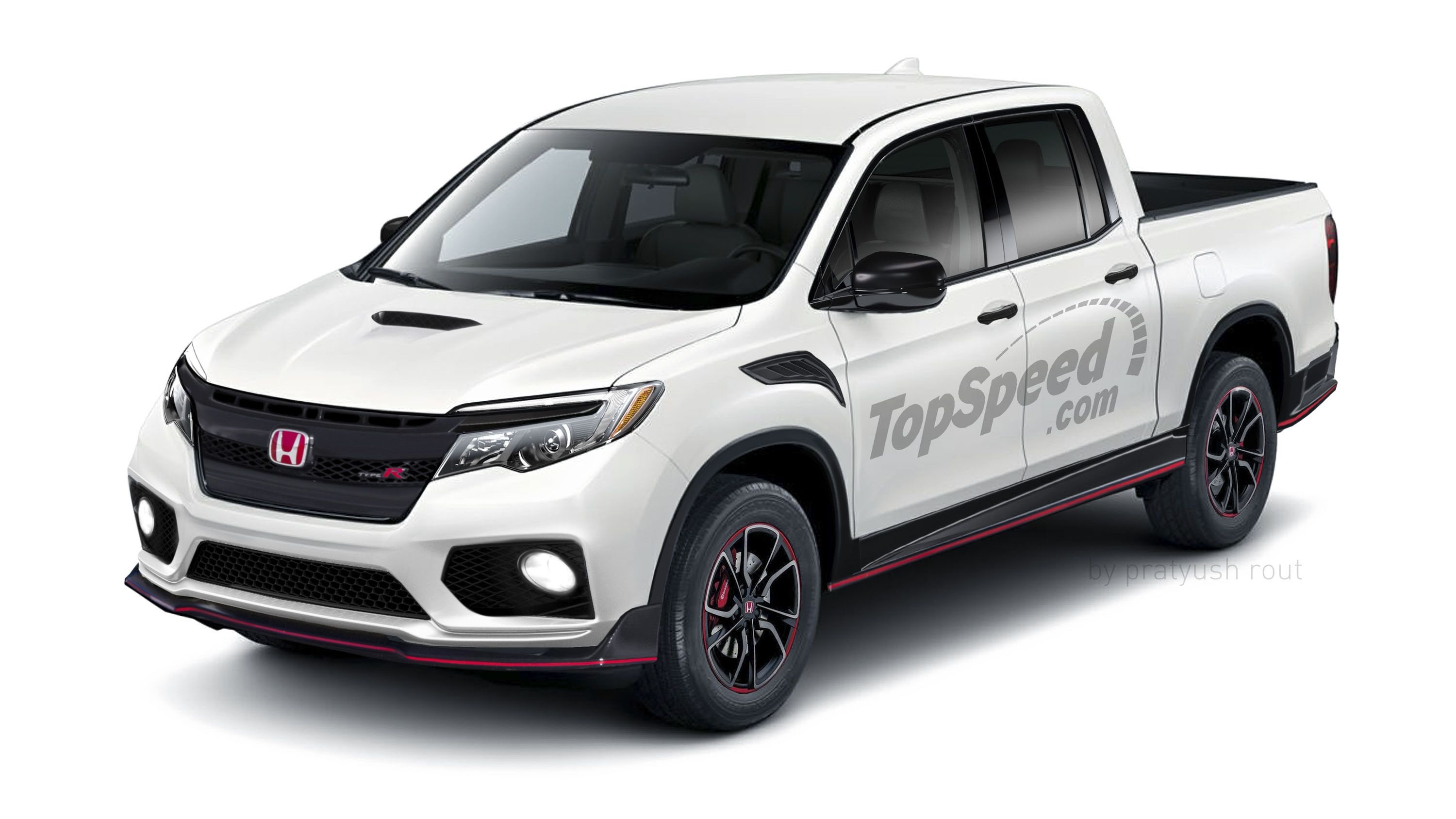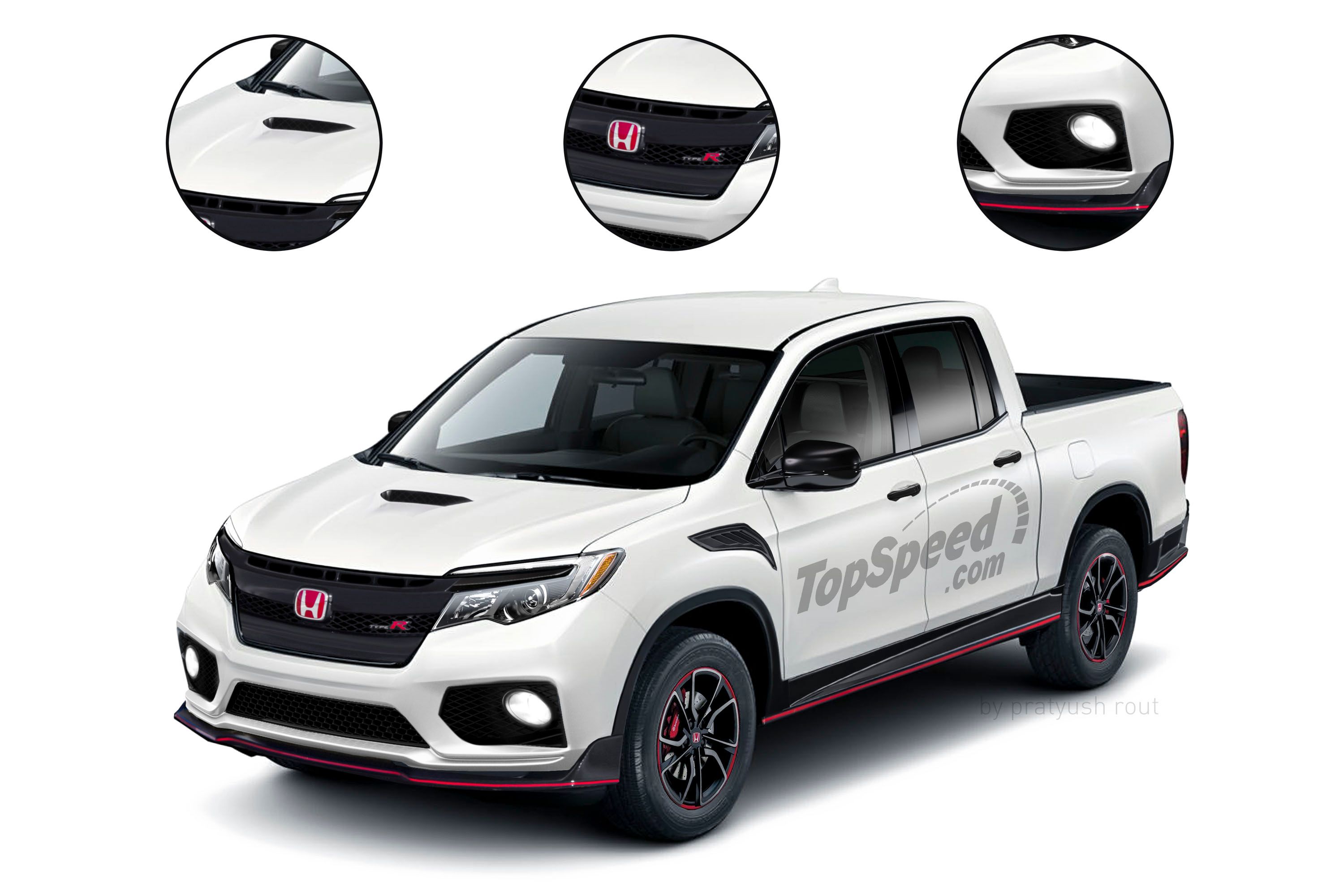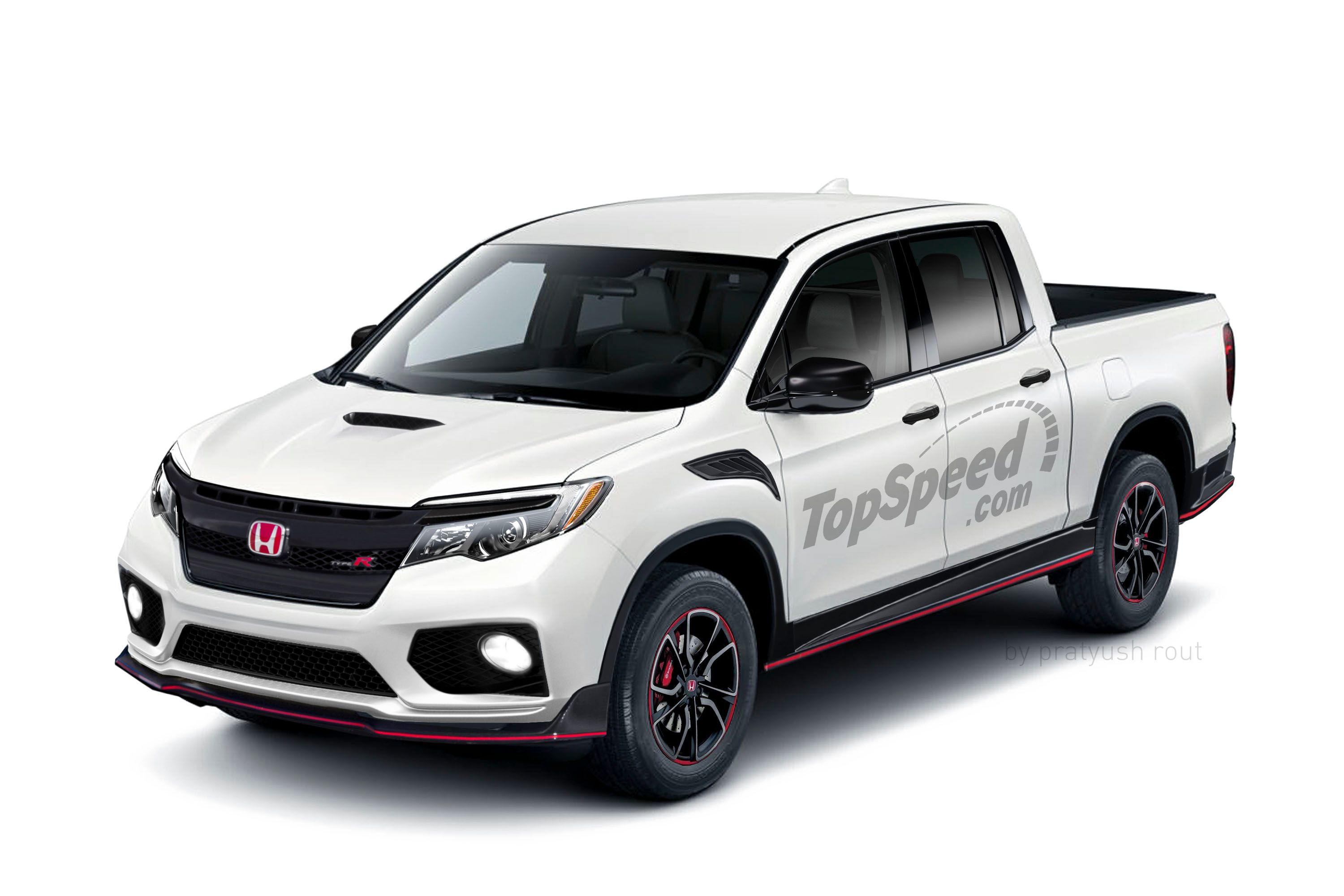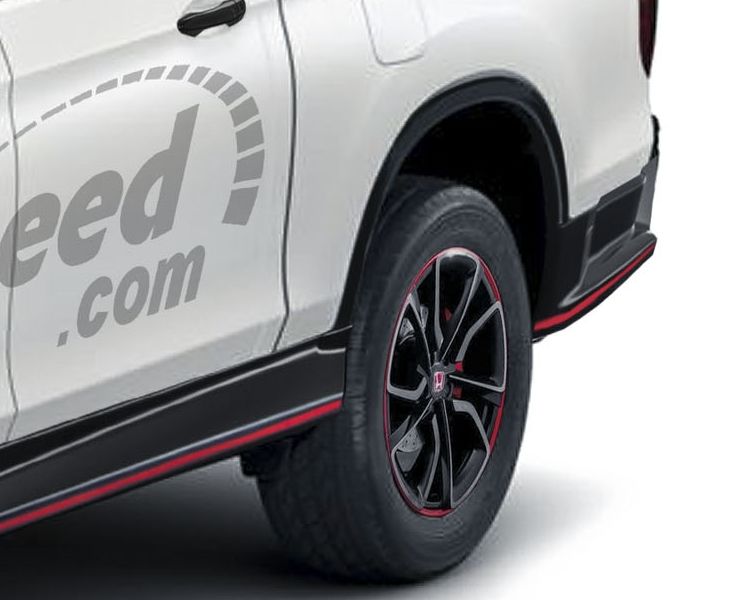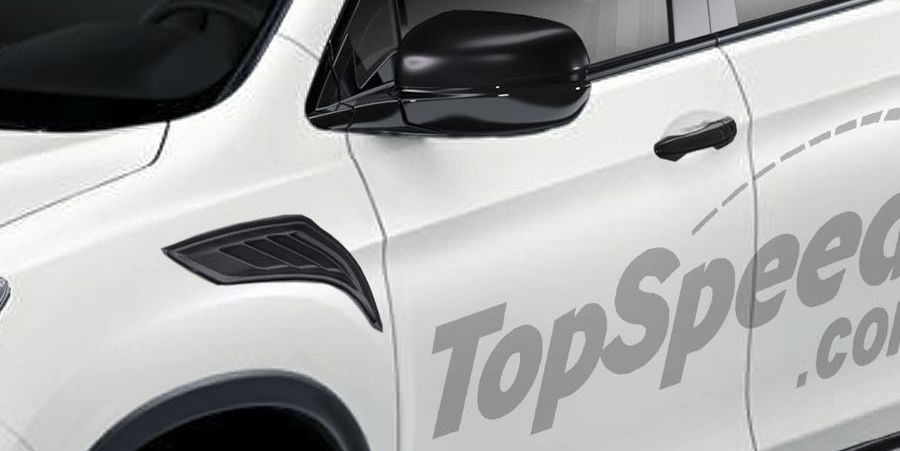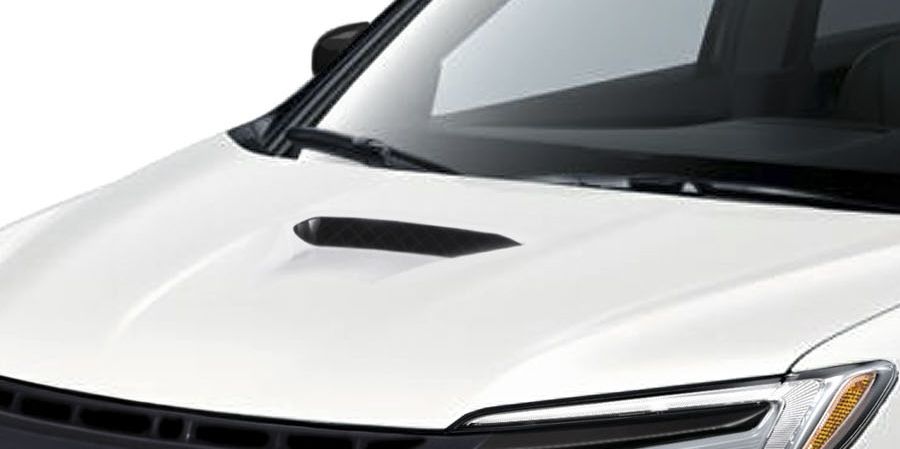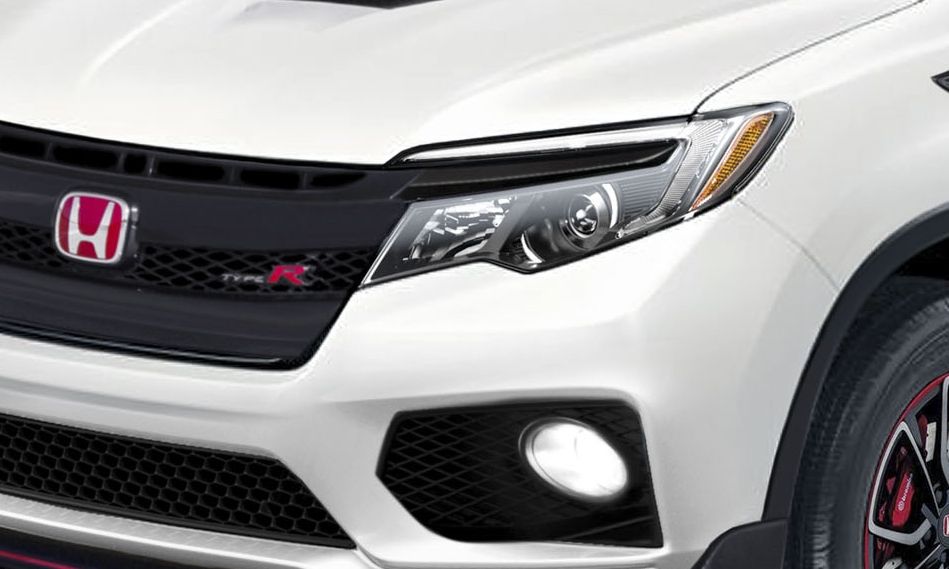Honda waited years before bringing the Civic Type R to the U.S., but now that it’s here, our lusting and longing for performance variants of Hondas is left lonely. That got us thinking what else Honda could “Type R-ify.” Considering high-performance pickups are all the rage these days (though more for the off-road set), we figured the Ridgeline is a perfect candidate for a hotter engine, upgraded suspension, and some heavily bolstered racing seats. Why not?
Alright, we know – Elon Musk has a better chance of landing a Tesla-branded rover on Mars than we have of convincing Honda to build a Type R version of the Ridgeline. Honda purists would shout sacrilege at a Ridgeline Type R and haters of Honda’s pickup would laugh even harder at this “non-pickup.” That doesn’t matter, though; we’d still love to see a high-performance version of the second-generation Ridgeline. Perhaps it could even reignite the sport truck niche, twisting Ford’s arm to bring back the F-150 Lightning, Chevy the Silverado SS, and GMC the Syclone. How cool would that be? So what might a Honda Ridgeline Type R include? Read on for the speculation.
Continue reading for more information.
2020 Honda Ridgeline Type R
- Make: Array
- Model: 2020 Honda Ridgeline Type R
- Horsepower: 450
- Torque: 420
- [do not use] Vehicle Model: Array
Exterior
What’s a performance model without some sporty bling? As such, the Ridgeline Type R would have several aerodynamic and cooling features that both separate it from other Ridgelines and provide functional benefits. We’d expect all the intakes, fins, and vents to be purposefully placed, just like those on the Civic Type R.
Up front, the grille and bumper share design cues with the Civic Type R, including the three-section lower grille, the blacked-out upper grille, and the iconic red Honda badge. The hood would feature a scoop for cooling the backside of the transversely mounted V-6, just as the scoop does with the Civic Type R’s inline-four. And just for fun, we threw on the fender vents from the previous-generation Civic Type R.
Down low, the Ridgeline Type R has carbon fiber aero bits. This includes the front chin splitter, the side sills, and a diffuser out back. Naturally, the Type R’s red accent color is found on the aero pieces, the wheels, and of course, the badges. Speaking of wheels, the Ridgeline Type R would come with lighter-weight alloys probably sized at 19 or 20 inches to accommodate the larger disc brakes. And though our rendering doesn’t quite show it, the tires would be low-profile summer rubber.
And because the Ridgeline Type R is still a Ridgeline, it would retain its handy cargo bed, two-way tailgate, and in-bed trunk. You’ve got to haul more than just butt when owning a truck, after all.
Interior
Note: Standard Honda Ridgeline pictured here.
The Ridgeline has a rather nice interior we’ve praised on several occasions. Its space for people and things is second to none in the mid-size pickup category. But the Ridgeline Type R would need some sprucing up. Expect tons of red accents on everything from the seats and the door panels to the dash and steering wheel. Oh, and Honda would undoubtedly add a flat-bottom wheel.
Honda might swap in a more performance-oriented gauge cluster with a larger tachometer and a few ancillary gauges like oil temperature and pressure. The biggest change Honda would have to make is the gearshift. The Ridgeline Type R can’t come with an automatic – heck no! It would need a proper six-speed manual and a clutch pedal. It looks like the center console would have enough room to accommodate the manual shift lever without cutting into the cup holders. And since it’s oriented toward the driver, the positioning should feel great.
Expect some heavily bolstered front seats comprised of suede, mesh, and leather. Red seat belts would be a nice touch, too. Like the Civic Type R, don’t expect anything to change with the back seats. They’ll get black leather with red contrast stitching, but would otherwise be unchanged. Of course, that’s not a bad thing at all; the Ridgeline’s rear seats are impressively comfortable, even for adults over long distances. Believe us, we tried it.
Drivetrain
Note: Standard Honda Ridgeline engine pictured here.
Down to the meat and potatoes. Honda would have to boost the performance of the Ridgeline’s 3.5-liter V-6. In its normal state, this all-aluminum engine makes 280 horsepower at 6,000 rpm and 262 pound-feet of torque at 4,700 rpm. That’s great for the standard Ridgeline, but the Type R needs more. Honda could turbocharge the engine, feeding it more air while an upgraded direct-injection fuel system squirts more 91-octane into the cylinders. An upgraded VTEC system would kick in, (yo), with a more aggressive camshaft grind for increased power in the engine’s upper register.
We’d bet Honda could easily get 450 horsepower and 420 pound-feet of torque from this setup. How? Well, the Civic Type R’s 2.0-liter turbo-four makes 306 horsepower – that’s 153 horsepower per liter. Let’s say Honda wanted to be conservative and give the Ridgeline Type R’s 3.5-liter V-6 128 horsepower per liter. That equates to 450 horsepower and the same power-to-weight ratio as the Civic Type R of 10 horses per pound. That’s a far better ratio than the 2017 Ford F-150 Raptor has. Even with its high-output 3.5-liter EcoBoost V-6 making 450 horsepower and 510 pound-feet of torque, the Crew Cab Raptor weighs a whopping 5,800 pounds. Compare that to the Ridgeline’s 4,515-pound curb weight.
And what’s a high-horsepower pickup without AWD? Honda could keep the Ridgeline’s AWD system and adapt it to handle the extra power. The system would also be reprogrammed with a rear bias, allowing the Ridgeline Type R to have a happy tail when drifting. What’s more, the Ridgeline’s AWD system already has a computer-controlled wet clutch-pack system that diverts power to whatever wheel has traction, meaning active torque vectoring isn’t far away.
With 450 horsepower, 420 pound-feet of torque, AWD, and a power-to-weight ratio equal to the Civic Type R, the Ridgeline Type R could easily match the Civic’s 0-to-60 mph time of 4.9 seconds. The truck’s top speed might be a bit less than 170 mph, though, due to the extra drag.
Suspension wise, the Ridgeline would use similar adaptive dampers for a ride that fits the driver’s mood. Tied into the Type R’s drive modes, the dampers would have three settings – Comfort, Sport, and +R. Thicker sway bars front and rear, along with stiffer coil springs at each corner, would give the pickup some impressive handling. Braking would be handled by six-piston Brembo calipers clamping on oversized vented rotors up front and four-piston calipers on vented rotors out back.
Pricing
Keeping with the proportionality in relation to the Civic family, the Ridgeline Type R could cost roughly $6,200 more than the range-topping trim, the Black Edition. For 2017, the Black Edition starts at $43,120. Add the Type R cost, and the hot-rod Ridgeline might have an MSRP of $49,320.
How’d we come up with $6,200? Well, the 2017 Civic Type R costs $6,200 more than the top-trim Civic Hatchback, the Sport Touring. An MSRP just under $50,000 seems downright reasonable for a 450-horsepower, AWD pickup with a Type R badge, especially considering most full-size trucks can easily surpass that price threshold without being anything special. Then again, we hope Honda wouldn’t recognize this and charge more.
Conclusion
Honda could definitely have a hit on its hands with the Ridgeline Type R. What’s not to like about a turbocharged Honda V-6 making 450 horsepower to spin all four wheels while still being impressively practical? Add to that a guesstimated starting price of under $50,000 and the Big Three might have a fight on their hands.
Sadly, this has all been pure speculation, make believe, Photoshop, and guessing. Honda isn’t going to build a Ridgeline Type R. It just doesn’t fit the Type R heritage and prestige. Honda purists would have a fit because Joe America might not understand what that red Honda badge means and the weight it holds. Then again, we’d love to be proven wrong.
What do you think? Should Honda build a Ridgeline Type R? Did we come close to speculating what it might look like? Let us know in the comments below.
References
Honda Ridgeline
Read our full review on the 2018 Honda Ridgeline.
Read our full driven review on the 2017 Honda Ridgeline.
Read more about the Honda Type R cars.

